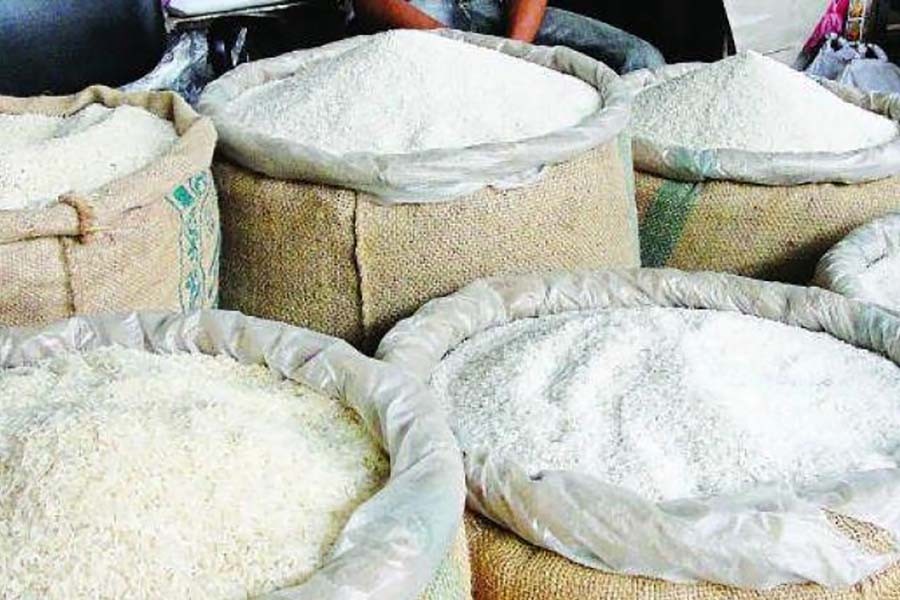What should be the reasonable price of rice at the consumers' level? Answers to this question would surely vary. The growers would quote a price that suits them best while the consumers would like to see the price of the main staple at an affordable level. Then again, affordability varies from person to person.
However, for a section of consumers the rice price is not an issue, for they can afford any price of the item. They have many other important issues to look into. But the problem is that the number of such consumers is very small. For most other consumers, rice price does matter.
People consume lots of items daily and a few of them are considered essentials. Rice is one such essential item and the price of the item has been politically sensitive one. The people in power always watch price movement of the item and any abnormal rise in its price usually makes them concerned.
A couple of statements by two senior ministers - Finance Minister AMA Muhith and Commerce Minister Tofael Ahmed - substantiate that view. The current level of rice price provoked them to make statements on two separate occasions. But the statements have definitely raised a few eyebrows.
The commerce minister speaking at an event in Dhaka last Thursday said rice price at Tk 40 per kilogramme (kg) is justified and fair for the sake of protecting the interest of the rice growers. Next day, the finance minister also backed Mr. Tofael's observation. Mr. Muhith, while speaking at a food safety day function, found the rice price at Tk 40 'tolerable' for both growers and consumers.
Whether the price is justified or not is a debatable issue, but the fact remains that the prevailing rice price is well above the mark mentioned by the two ministers. The minimum price of coarse rice is now hovering between Tk 45 and Tk 50 a kg. Moreover, there should be no reason for the rice price to come below Tk 40 when the government has set its procurement price at Tk 39 a kg during the current Boro season.
Many tend to ask one question: Is there any valid reason to be specially concerned if the price of rice goes up when prices of many other essentials are also maintaining an uptrend?
Logically speaking, there should not be any reason for raising alarm by the middle, upper middle class and affluent sections of people over rice price hike, for this kind of hike does not make that much difference in their cost of living. In the overall cost of living, the money spent on rice has never been a big deal for these sections of people.
But for the poor and lower-middle class people, the price of rice is a critical issue. A good number of them prefer taking rice three times a day and they, in most cases, consume the commodity in far greater quantity than the people belonging to the middle and upper-middle classes. So, the former are required to spend a substantial part of their earnings on rice. They have reasons to be concerned.
There is no denying that the people's income has risen over time and none is starving these days. This has been true for more than three and a half decades. But the living in affluence cannot be compared with living from hand to mouth. While mentioning the rise in income, one can hardly miss the issue of the widening income inequality.
All people, except the poor and low-income ones, do save big or small of amount of money. The poor people do also aspire to make such savings after meeting their daily expenses. But when prices of essentials and expenses on transportation and healthcare, etc., go up their hope to make savings gets dashed. Rather the process of pauperisation comes into play in the event of hike in the cost of living. Many people who managed to come out of poverty are again thrown into old poverty cycle by the rising prices of essentials, including rice.
Moreover, the price level of rice or any other essential item has a bearing on the prices or cost of many other non-food items/services. The people involved in management and operation of non-food items do very often cite the rise in the prices of essentials in support of their move to increase the prices and rates of their own items or services.
However, there is no scope to see rice price in isolation. If the prices of other consumables go up, naturally the same would happen in the case of rice. But problem arises when people in authority, unnecessarily, tend to raise a few false expectations about low price of rice or any other essential item.
Under the prevailing food production scenario, cost of production at the growers' level and cost of import, it would be unrealistic to expect rice selling at cheaper rates. But the government cannot be oblivious of the purchasing power of the poor and low-income people. The official open market sale (OMS) of rice at subsidised rate is now almost stalled. Since the government's food stock has improved, the food directorate should start selling OMS rice without any further delay.


